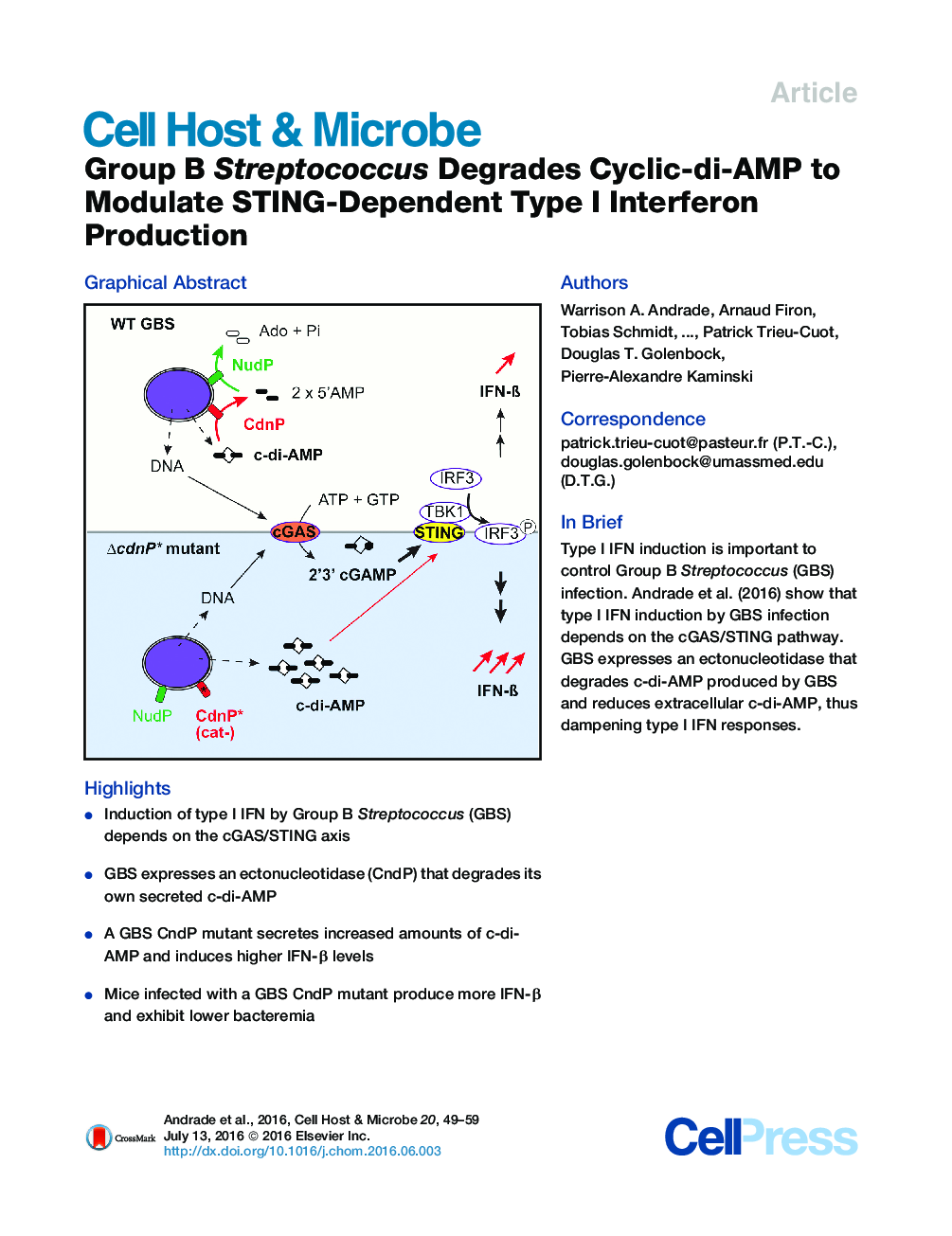| Article ID | Journal | Published Year | Pages | File Type |
|---|---|---|---|---|
| 4360812 | Cell Host & Microbe | 2016 | 11 Pages |
•Induction of type I IFN by Group B Streptococcus (GBS) depends on the cGAS/STING axis•GBS expresses an ectonucleotidase (CndP) that degrades its own secreted c-di-AMP•A GBS CndP mutant secretes increased amounts of c-di-AMP and induces higher IFN-β levels•Mice infected with a GBS CndP mutant produce more IFN-β and exhibit lower bacteremia
SummaryInduction of type I interferon (IFN) in response to microbial pathogens depends on a conserved cGAS-STING signaling pathway. The presence of DNA in the cytoplasm activates cGAS, while STING is activated by cyclic dinucleotides (cdNs) produced by cGAS or from bacterial origins. Here, we show that Group B Streptococcus (GBS) induces IFN-β production almost exclusively through cGAS-STING-dependent recognition of bacterial DNA. However, we find that GBS expresses an ectonucleotidase, CdnP, which hydrolyzes extracellular bacterial cyclic-di-AMP. Inactivation of CdnP leads to c-di-AMP accumulation outside the bacteria and increased IFN-β production. Higher IFN-β levels in vivo increase GBS killing by the host. The IFN-β overproduction observed in the absence of CdnP is due to the cumulative effect of DNA sensing by cGAS and STING-dependent sensing of c-di-AMP. These findings describe the importance of a bacterial c-di-AMP ectonucleotidase and suggest a direct bacterial mechanism that dampens activation of the cGAS-STING axis.
Graphical AbstractFigure optionsDownload full-size imageDownload high-quality image (173 K)Download as PowerPoint slide
